Trimbakeshwar Temple is one of the most sacred and ancient temples in India dedicated to Lord Shiva, the supreme deity of Hinduism Located in the holy city of Trambakeshwar near Nashik in Maharashtra, this temple is one of the twelve Jyotirlingas and is the most powerful manifestation of Lord Shiva. It is the source of the holy river Godavari which flows from Brahmagiri mountain behind the temple. The Trimbakeshwar Temple is not only a place of worship but today it is a famous tourist destination steeped in culture and beauty. Trimbakeshwar Temple Visit During Mumbai to Trimbakeshwar Tour Package by cab
The temple has witnessed so many legends and myths over the centuries and has also witnessed the evolution of Hinduism. With beautiful carvings and sculptures depicting various scenes from Hindu mythology, this temple can be seen as a wonderful example of architecture and craftsmanship. The temple complex is surrounded by greenery and a serene environment which makes it a perfect tourist destination for spiritual seekers and nature lovers.
In this blog we will explore various aspects of Trimbakeshwar Temple History, Importance, Legend, Architecture, Complex Pilgrimage, Festivals and nearby attractions. We will also share some tips for those who want to experience the divine grace of the holy tourist places to visit.
Table of Contents
History of Trimbakeshwar Temple
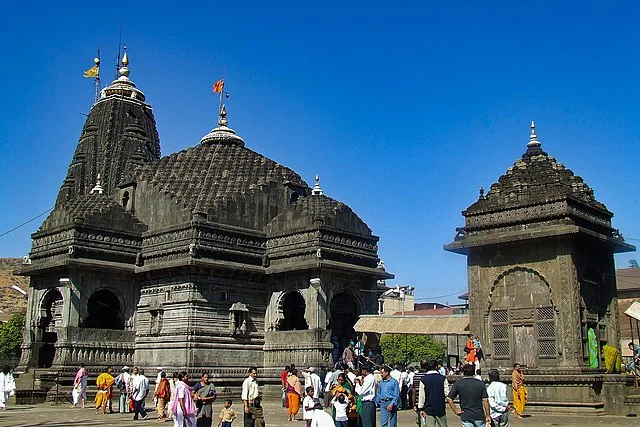
The creation and history of Trimbakeshwar Temple is steeped in a sweet and legendary story. According to a legend, this temple was built by Lord Brahma himself, the creator of the universe. When he was cursed by Lord Shiva to lie about finding the end of the cosmic pillar of fire that arose from the earth To atone for the sin of killing Brahma, Lord Brahma performed penance at Trambak and established the Jyotirlinga here.
According to another legend, the temple was built by King Trimbakrao Sumanta Dev in the 18th century under the patronage of Pishvi Balaji Bajirao. The Peshwas were great devotees of Lord Shiva and contributed to the restoration and expansion of the temple. Many saints and sages like Nivrittinath, Dnyaneshwar, Eknath, Ramdas Swami and Saibaba visited this temple. The architecture of the temple reflects the influence of various styles and eras.
The Main Temple is built in the Nagara style which has a pinnacle above the Garbha Graha. The Garbhagraha has a small linga made of black stone adorned with a silver crown studded with precious stones In which a small linga representing Brahma Vishnu and Shiva is installed inside the crown. The crown is displayed only on special occasions like Mondays and festival.
The temple complex also has several other shrines dedicated to various deities such as Goddess Parvati (Lord Shiva’s consort), Lord Ganesha (the elephant-headed god of wisdom and success), Lord Hanuman (the monkey-god and devotee of Lord Rama), Lord Kartikeya (Lord Shiva’s son and god of war), Goddess Annapurna (goddess of food and nourishment), Goddess Durga (goddess of power and victory), Goddess Kali (goddess of destruction and transformation), and Lord Rama (the seventh avatar of Lord Vishnu).
The temple complex also has several tanks or kunds that are considered sacred by the devotees. The most important one is the Kushavarta Kund, which is believed to be the origin point of River Godavari. The kund is surrounded by stone steps and pillars that lead to the water level. Devotees take a dip in this kund before entering the main temple. Other kunds include Gangadwar Kund, Bilva Teertha Kund, Indra Teertha Kund, Varaha Teertha Kund, Ahilya Teertha Kund, Gautam Teertha Kund, etc.
Significance of Trimbakeshwar Temple
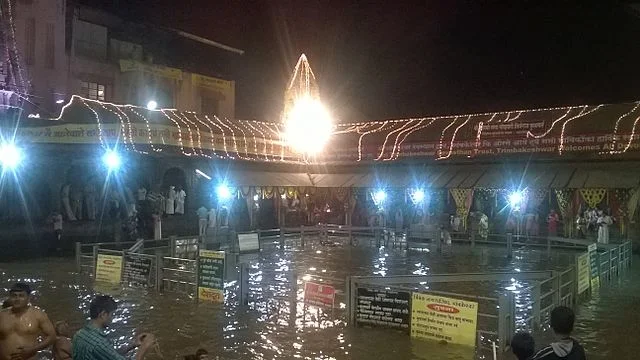
Trimbakeshwar temple is one of the most important pilgrimage sites for Hindus all over the world. The temple is revered for its spiritual and religious significance, as well as its historical and cultural value.
The main attraction of the temple is the Trimbakeshwar Jyotirlinga, which is one of the 12 Jyotirlingas in India. Jyotirlingas are the most powerful and sacred forms of Lord Shiva, and are believed to emanate a divine light that can destroy darkness and ignorance. The word Jyotirlinga means “the lingam of light” or “the pillar of light”. Each Jyotirlinga represents a different aspect or attribute of Lord Shiva, such as his compassion, his fury, his wisdom, his benevolence, etc.
The Trimbakeshwar Jyotirlinga represents Lord Shiva as the Trimurti or the trinity of Brahma, Vishnu, and Shiva. The Jyotirlinga symbolizes the harmony and balance between the three aspects of creation, preservation, and destruction. It also signifies the unity and diversity of Hinduism, as it encompasses the three major sects of Shaivism, Vaishnavism, and Shaktism. Devotees who worship the Trimbakeshwar Jyotirlinga are blessed with peace, prosperity, and liberation.
Another significance of Trimbakeshwar temple is its association with River Godavari, which is considered to be one of the seven holy rivers in India. River Godavari is also known as Gautami Ganga or Dakshin Ganga (the Ganges of the south). The river originates from the Brahmagiri mountain behind the temple and flows through several states before merging with the Bay of Bengal. The river is revered as a mother goddess who nourishes and purifies the land and its people.
River Godavari is also linked to many legends and myths related to Trimbakeshwar temple. According to one legend, River Godavari was created by Lord Shiva to wash away the sins of Sage Gautam Rishi and his wife Ahilya, who were falsely accused of adultery by Lord Indra. According to another legend, River Godavari was brought down from heaven by Lord Shiva to quench the thirst of Sage Agastya, who had swallowed all the water in the world to save it from a demon. According to yet another legend, River Godavari was used by Lord Shiva to perform an abhishekam (ritual bathing) on the Trimbakeshwar Jyotirlinga to pacify his anger after killing a demon named Tripurasura.
Trimbakeshwar temple is also known for its various rituals, festivals, and celebrations that attract devotees from far and wide. The most prominent ritual performed at the temple is the Narayan Nagbali Puja, which is a rare and complex ritual that involves offering prayers to Lord Vishnu (Narayan) and Lord Shiva (Nagbali) for the salvation of ancestors and removal of curses. The ritual lasts for three days and can only be performed at Trimbakeshwar temple by qualified priests.
Another important ritual performed at the temple is the Kalsarpa Shanti Puja, which is a remedy for those who suffer from Kalsarpa Dosha (a planetary affliction that causes misfortune and obstacles in life). The ritual involves worshipping Lord Shiva and offering prayers to Rahu (the serpent god) and Ketu (the dragon god), who are responsible for creating Kalsarpa Dosha in one’s horoscope. The ritual helps to reduce the negative effects of Kalsarpa Dosha and bring peace and prosperity in one’s life.
Some of the major festivals celebrated at Trimbakeshwar temple are Mahashivaratri (the great night of Lord Shiva), Shravan Maas (the holy month of Lord Shiva), Kumbh Mela (the largest religious gathering in the world), Sinhastha Parvani (the auspicious day when Jupiter enters Leo), Guru Purnima (the full moon day dedicated to spiritual teachers), etc. These festivals are marked by special pujas, abhishekams, aartis (ritual waving of lamps), bhajans (devotional songs), prasadams (sacred offerings), processions, fairs, etc. The festivals create a festive atmosphere at the temple and fill the devotees with joy and devotion.
Legends and Myths Associated with Trimbakeshwar Temple
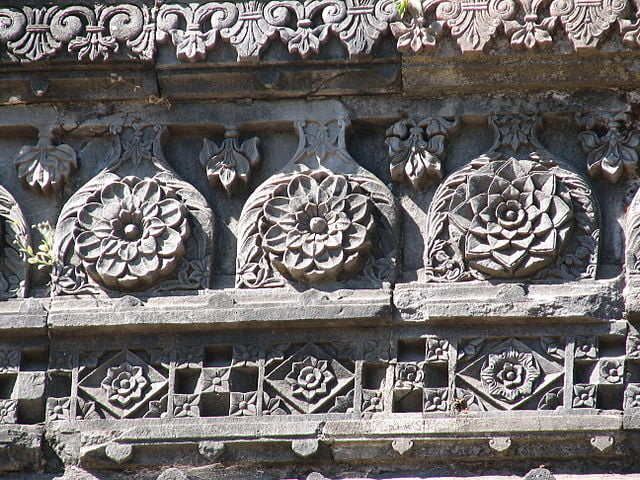
Trimbakeshwar temple is a treasure trove of legends and myths that add to its charm and mystique. The temple has been a witness to many events and stories that have shaped the history and culture of Hinduism. Some of the most popular legends and myths associated with Trimbakeshwar temple are:
The Legend of Gautam Rishi and the Origin of River Godavari
One of the most famous legends associated with Trimbakeshwar temple is the legend of Gautam Rishi and the origin of River Godavari. According to this legend, Gautam Rishi was a sage who lived in Trimbak with his wife Ahilya. They were devoted to Lord Shiva and performed penance and worship every day.
One day, Lord Indra, the king of gods, was enamored by the beauty of Ahilya and decided to seduce her. He waited for Gautam Rishi to leave for his morning rituals and then disguised himself as Gautam Rishi and approached Ahilya. Ahilya, who could not recognize the impostor, welcomed him as her husband and offered him hospitality. Lord Indra took advantage of this situation and violated her chastity.
When Gautam Rishi returned from his rituals, he saw Lord Indra fleeing from his ashram. He realized what had happened and cursed Lord Indra to have a thousand eyes on his body. He also cursed Ahilya to turn into a stone for her infidelity. Ahilya pleaded for forgiveness and said that she was innocent and deceived by Lord Indra. Gautam Rishi said that she would be freed from the curse only when Lord Rama, the seventh avatar of Lord Vishnu, would touch her with his feet.
Gautam Rishi was also filled with remorse and guilt for cursing his wife. He decided to perform a penance to wash away his sins. He went to Trimbak mountain and prayed to Lord Shiva for forgiveness. Lord Shiva was pleased with his devotion and asked him what he wanted. Gautam Rishi asked for a river to flow from Trimbak mountain so that he could perform his daily rituals and ablutions.
Lord Shiva granted his wish and ordered River Ganga, the holiest river in Hinduism, to descend from heaven and flow from Trimbak mountain. River Ganga obeyed Lord Shiva’s command and came down from heaven in the form of a cow. She emerged from the cow’s mouth as a stream of water and flowed from Trimbak mountain. She was named Godavari, which means “the one who bestows cows” or “the one who came from a cow”.
Gautam Rishi was overjoyed to see River Godavari flowing from Trimbak mountain. He thanked Lord Shiva and performed his rituals in the river. He also built a temple for Lord Shiva on the banks of the river and installed a Jyotirlinga there. He named the Jyotirlinga as Trimbakeshwar, which means “the lord of Trimbak”. He also requested Lord Shiva to stay there forever and bless the devotees who visit the temple.
Trimbakeshwar and the Curse of Brahma Hatya
Another legend associated with Trimbakeshwar temple is the legend of Trimbakeshwar and the curse of Brahma Hatya. According to this legend, once there was a fierce competition between Lord Brahma, the creator of the universe, and Lord Vishnu, the preserver of the universe, to prove their supremacy over each other. They decided to find out who could reach the end of a cosmic pillar of fire that emerged from the earth.
Lord Brahma took the form of a swan and flew upwards to find the top of the pillar. Lord Vishnu took the form of a boar and dug downwards to find the bottom of the pillar. However, neither of them could find the end of the pillar, as it was infinite and beyond their reach.
After a long time, Lord Brahma decided to give up and return to the earth. On his way back, he saw a ketaki flower (a type of fragrant flower) falling from the sky. He asked the flower where it came from and how long it had been falling. The flower said that it came from the top of the pillar and had been falling for thousands of years. Lord Brahma had an idea and asked the flower to lie for him and say that he had seen him at the top of the pillar. The flower agreed to do so.
Lord Brahma returned to the earth and met Lord Vishnu, who had also given up and returned to the earth. Lord Brahma claimed that he had reached the top of the pillar and brought the ketaki flower as a witness. Lord Vishnu was doubtful and asked the ketaki flower to confirm Lord Brahma’s claim. The ketaki flower lied and said that Lord Brahma had indeed reached the top of the pillar.
However, their lie was exposed by Lord Shiva, who was the one who had manifested as the cosmic pillar of fire. He was angry with Lord Brahma for lying and with the ketaki flower for supporting his lie. He cursed Lord Brahma that he would not be worshipped by anyone on earth and that he would suffer from Brahma Hatya (the sin of killing Brahma). He also cursed the ketaki flower that it would not be used in any religious rituals or offerings.
Lord Brahma was terrified by Lord Shiva’s curse and begged for mercy. Lord Shiva said that he could only be freed from his curse if he performed a penance at Trimbak mountain and worshipped the Trimbakeshwar Jyotirlinga. Lord Brahma agreed to do so and went to Trimbak mountain. He performed a severe penance for many years and worshipped the Trimbakeshwar Jyotirlinga with devotion.
Lord Shiva was pleased with his penance and forgave him for his sin. He also granted him a boon that he would be worshipped once in a year on a special day called Kartik Purnima (the full moon day in the month of Kartik). He also said that anyone who worships the Trimbakeshwar Jyotirlinga on this day would be freed from their sins and attain salvation.
Other Notable Myths and Stories Related to Trimbakeshwar Temple
There are many other myths and stories related to Trimbakeshwar temple that add to its glory and grandeur. Some of them are:
- According to one story, Lord Rama, along with his wife Sita and brother Lakshmana, visited Trimbakeshwar temple during their exile in the forest. They worshipped the Trimbakeshwar Jyotirlinga and performed a yagna (fire sacrifice) there to seek blessings from Lord Shiva. It is believed that Lord Rama also freed Ahilya from her curse by touching her with his feet at this place.
- According to another story, Lord Krishna, along with his brother Balarama and friend Sudama, visited Trimbakeshwar temple during their childhood. They played near River Godavari and enjoyed its beauty and freshness. They also worshipped the Trimbakeshwar Jyotirlinga and received blessings from Lord Shiva.
- According to yet another story, Sai Baba, a famous saint and spiritual master who lived in Shirdi, visited Trimbakeshwar temple during his lifetime. He performed miracles and healed many people at this place. He also meditated under a neem tree near River Godavari and attained enlightenment there.
Architectural Marvels of Trimbakeshwar Temple

Trimbakeshwar temple is not only a place of spirituality, but also a place of art and beauty. The temple’s architecture is a marvel of art and craftsmanship, with intricate carvings and sculptures depicting various scenes from Hindu mythology. The temple’s architecture reflects the influence of various styles and periods. Some of the architectural marvels of Trimbakeshwar temple are:
Overview of the Temple’s Architectural Style
The temple’s architectural style is mainly Nagara, which is a style of temple architecture that originated in North India. The Nagara style is characterized by a shikhara (spire) that rises above the sanctum sanctorum and represents Mount Kailash, the abode of Lord Shiva. The shikhara is also called a rekha-deul, which means a straight or linear temple.
The temple also has elements of Hemadpanthi style, which is a style of temple architecture that developed in Maharashtra during the 13th century CE. The Hemadpanthi style is named after Hemadpant, a minister and architect who worked under the Yadava dynasty. The Hemadpanthi style is characterized by the use of black basalt stone and lime mortar for construction. The stone blocks are carved with intricate patterns and motifs and are fitted together without any gaps.
The temple also has elements of Maratha style, which is a style of temple architecture that flourished in Maharashtra during the 17th and 18th centuries CE under the Peshwa rule. The Maratha style is characterized by the use of wood, metal, and stone for decoration. The Maratha style also incorporates Islamic influences such as domes, arches, and minarets.
Intricate Carvings and Sculptures Found Within the Temple Complex
The temple complex is adorned with many carvings and sculptures that depict various scenes from Hindu mythology and history. Some of the carvings and sculptures found within the temple complex are:
- The Dashavatar Mandap, which is a hall that has ten panels depicting the ten avatars or incarnations of Lord Vishnu. The panels show Lord Vishnu as Matsya (fish), Kurma (tortoise), Varaha (boar), Narasimha (man-lion), Vamana (dwarf), Parashurama (warrior), Rama (prince), Krishna (cowherd), Buddha (enlightened one), and Kalki (future savior).
- The Nandi Mandap, which is a hall that has a statue of Nandi (the bull) facing the main shrine. Nandi is the vehicle and loyal companion of Lord Shiva. The hall also has carvings of various forms of Lord Shiva such as Ardhanarishwara (half-male half-female), Nataraja (lord of dance), Lingodbhava (emerging from the lingam), etc.
- The Garbhagriha, which is the sanctum sanctorum that houses the Trimbakeshwar Jyotirlinga. The sanctum is decorated with silver and gold ornaments and has carvings of various deities such as Brahma, Vishnu, Shiva, Ganesha, Kartikeya, etc. The sanctum also has a silver door that has images of Ashtavinayaka (the eight forms of Ganesha) on it.
- The Sabha Mandap, which is a hall that has a large silver idol of Lord Shiva sitting on a throne. The hall also has carvings of various scenes from Ramayana and Mahabharata, such as Rama killing Ravana, Krishna lifting Govardhan hill, Arjuna shooting the fish eye, etc.
- The Pradakshina Patha, which is a circumambulation path that goes around the main shrine. The path has carvings of various gods and goddesses such as Saraswati (goddess of learning), Lakshmi (goddess of wealth), Durga (goddess of power), etc.
Unique Features and Elements of the Temple’s Design
The temple’s design also has some unique features and elements that make it stand out from other temples. Some of these features and elements are:
The Trimbakeshwar Jyotirlinga itself is unique in its shape and size. It is small and cylindrical in shape and measures about 10 inches in height and 8 inches in circumference. It is also hollow from inside and has three small holes on its top surface. These holes represent Brahma, Vishnu, and Shiva respectively. A silver mask covers the Jyotirlinga most of the time and is removed only on special occasions.
The temple complex also has a secret passage that leads to a cave behind the Brahmagiri mountain. The cave is believed to be the place where Sage Gautam Rishi performed his penance and worshipped the Trimbakeshwar Jyotirlinga. The cave also has a small shrine dedicated to Lord Shiva and a spring of water that is considered sacred. The passage and the cave are not open to the public and can only be accessed by special permission from the temple authorities.
The temple complex also has a unique feature called the Akash Ganga, which means “the celestial river”. It is a stream of water that flows from the top of the Brahmagiri mountain and falls on the roof of the main shrine. The water then flows down through a pipe and reaches the sanctum sanctorum, where it performs an abhishekam (ritual bathing) on the Trimbakeshwar Jyotirlinga. The water then flows out of the temple and joins River Godavari. The Akash Ganga is considered to be a divine blessing and a symbol of Lord Shiva’s grace.
Temple Complex and Surroundings Of Trimbakeshwar Temple

Trimbakeshwar temple is not only a place of worship, but also a place of beauty and tranquility. The temple complex is surrounded by lush greenery and serene atmosphere, making it a perfect destination for spiritual seekers and nature lovers alike.
The temple complex covers an area of about 10 acres and has several structures and facilities for the convenience and comfort of the visitors. Some of the structures and facilities within the temple complex are:
- The Main Gate, which is the entrance to the temple complex. It has a large archway with carvings of various deities and motifs. It also has a security check point and a shoe stand where visitors have to deposit their footwear before entering the temple.
- The Dharmashala, which is a guest house that provides accommodation for visitors who wish to stay overnight at the temple. It has rooms with basic amenities such as beds, fans, lights, etc. It also has a dining hall that serves vegetarian food to the guests.
- The Bhojanalaya, which is a canteen that serves snacks and beverages to the visitors. It has a variety of items such as tea, coffee, milk, biscuits, fruits, etc. It also has a water cooler that provides clean drinking water to the visitors.
- The Souvenir Shop, which is a shop that sells various items related to Trimbakeshwar temple and Hinduism. It has items such as books, CDs, DVDs, idols, pictures, posters, calendars, key chains, etc. It also has items made of silver and gold such as coins, rings, pendants, etc.
- The Library, which is a library that has a collection of books and magazines related to Trimbakeshwar temple and Hinduism. It has books on topics such as history, culture, mythology, spirituality, philosophy, etc. It also has magazines that cover current affairs and events related to Hinduism.
- The Museum, which is a museum that displays various artifacts and relics related to Trimbakeshwar temple and Hinduism. It has items such as ancient coins, inscriptions, sculptures, paintings, weapons, utensils, etc. It also has items that belong to famous saints and sages who visited Trimbakeshwar temple such as Nivruttinath, Gyaneshwar, Eknath, Ramdas Swami, Sai Baba, etc.
The temple complex is also surrounded by a beautiful and peaceful environment that enhances the spiritual experience of the visitors. The temple complex is located at the foothills of the Brahmagiri mountain, which is a part of the Sahyadri range of the Western Ghats. The mountain is covered with dense forests and has many streams and waterfalls that add to its charm and freshness.
The temple complex also overlooks the River Godavari, which flows from the Brahmagiri mountain and passes through the town of Trimbak. The river is a source of life and prosperity for the people living in and around Trimbak. The river also has many ghats (steps leading to the water) and bridges that provide access and connectivity to the visitors.
The temple complex also has many gardens and parks that provide a green and relaxing space for the visitors. The gardens and parks have many plants and flowers that add color and fragrance to the atmosphere. They also have many benches and swings that provide seating and recreation for the visitors.
Pilgrimage and Visitors’ Experience of Trimbakeshwar Temple
Trimbakeshwar temple is a popular pilgrimage destination for devotees who wish to seek blessings from Lord Shiva and experience his divine grace. The temple attracts millions of visitors every year from different parts of India and abroad. The visitors come to Trimbakeshwar temple for various reasons such as:
- To worship the Trimbakeshwar Jyotirlinga and receive its benefits such as peace, prosperity, and liberation.
- To perform various rituals such as Narayan Nagbali Puja, Kalsarpa Shanti Puja, Rudrabhishekam, etc. for the salvation of ancestors and removal of curses.
- To take a dip in River Godavari and wash away their sins and impurities.
- To witness and participate in various festivals such as Mahashivaratri, Shravan Maas, Kumbh Mela, Sinhastha Parvani, Guru Purnima, etc. and enjoy the festive atmosphere at the temple.
- To explore the history, culture, and beauty of Trimbakeshwar temple and its surroundings.
The visitors’ experience at Trimbakeshwar temple is enhanced by the facilities and amenities available at the temple complex. The temple complex has a well-maintained infrastructure that provides comfort and convenience to the visitors. Some of the facilities and amenities available at the temple complex are:
- A parking lot that provides space for vehicles such as cars, buses, bikes, etc.
- A cloak room that provides lockers for storing valuables such as bags, wallets, phones, etc.
- A medical center that provides first aid and emergency services for visitors who fall ill or get injured at the temple.
- A security system that provides safety and protection for visitors from any threats or dangers at the temple.
- A donation box that provides an opportunity for visitors to contribute to the maintenance and development of the temple.
The visitors’ experience at Trimbakeshwar temple is also enhanced by the hospitality and guidance provided by the temple staff and priests. The temple staff and priests are friendly and helpful and provide various services and information to the visitors. Some of the services and information provided by the temple staff and priests are:
- A darshan queue that provides a systematic and orderly way for visitors to enter the main shrine and have a glimpse of the Trimbakeshwar Jyotirlinga.
- A puja booking system that provides a convenient and easy way for visitors to book and perform various pujas and rituals at the temple.
- A prasadam distribution system that provides a hygienic and timely way for visitors to receive and consume the prasadam (sacred offering) given by the temple.
- A temple guide that provides a detailed and informative tour of the temple complex and its various structures and features.
- A priest consultation that provides a personalized and professional advice on various spiritual and astrological matters related to the visitors.
The visitors’ experience at Trimbakeshwar temple is also enhanced by the insights and inspiration they gain from their visit. The visit to Trimbakeshwar temple is not only a physical journey, but also a spiritual journey that enriches the mind, body, and soul of the visitors. Some of the insights and inspiration they gain from their visit are:
- A sense of awe and wonder at the magnificence and majesty of Lord Shiva and his manifestations.
- A sense of gratitude and devotion for the blessings and grace of Lord Shiva and his devotees.
- A sense of peace and harmony with oneself, others, and nature.
- A sense of joy and happiness at the beauty and bliss of Lord Shiva and his creation.
- A sense of purpose and direction for one’s life and destiny.
Festivals and Celebrations in Trimbakeshwar Temple
Trimbakeshwar temple is a place of joy and celebration, where various festivals are celebrated throughout the year with great fervor and enthusiasm. The festivals are marked by special pujas, abhishekams, aartis, bhajans, prasadams, processions, fairs, etc. The festivals create a festive atmosphere at the temple and fill the devotees with joy and devotion. Some of the major festivals celebrated at Trimbakeshwar temple are:
Mahashivaratri
Mahashivaratri is the great night of Lord Shiva, which falls on the 14th night of the dark fortnight in the month of Phalguna (February-March). It is believed that on this night, Lord Shiva performed his cosmic dance of creation, preservation, and destruction. It is also believed that on this night, Lord Shiva married Goddess Parvati.
Mahashivaratri is celebrated with great devotion and enthusiasm at Trimbakeshwar temple. The devotees observe a fast throughout the day and night and worship Lord Shiva with offerings such as milk, water, honey, flowers, fruits, etc. They also chant mantras such as “Om Namah Shivaya” (I bow to Lord Shiva) and “Shivoham” (I am Lord Shiva). They also perform four pujas during the four quarters of the night, each representing a different aspect of Lord Shiva.
The highlight of Mahashivaratri at Trimbakeshwar temple is the display of the silver crown that covers the Trimbakeshwar Jyotirlinga. The crown is removed only on this night and the devotees get a chance to see the Jyotirlinga in its full glory. The crown is also taken out in a procession around the temple complex and the town of Trimbak. The devotees join the procession and sing and dance in praise of Lord Shiva.
Shravan Maas
Shravan Maas is the holy month of Lord Shiva, which falls in the months of July-August. It is believed that during this month, Lord Shiva grants all the wishes and desires of his devotees. It is also believed that during this month, the cosmic energy of Lord Shiva is at its peak and can be easily accessed by the devotees.
Shravan Maas is celebrated with great devotion and enthusiasm at Trimbakeshwar temple. The devotees observe various vows and rituals during this month such as fasting, abstinence, charity, etc. They also worship Lord Shiva with offerings such as bilva leaves (a type of sacred leaf), bhang (a type of cannabis), rudraksha beads (a type of seed), etc. They also perform Rudrabhishekam, which is a ritual of bathing Lord Shiva with water mixed with various herbs and substances.
The highlight of Shravan Maas at Trimbakeshwar temple is the Shravan Somvar Vrat, which is a vow observed on every Monday of this month. The devotees wake up early in the morning and take a bath in River Godavari. They then visit Trimbakeshwar temple and worship Lord Shiva with offerings such as milk, water, honey, flowers, fruits, etc. They also chant mantras such as “Om Namah Shivaya” (I bow to Lord Shiva) and “Shivoham” (I am Lord Shiva). They also perform Rudrabhishekam on the Trimbakeshwar Jyotirlinga and seek blessings from Lord Shiva.
Kumbh Mela
Kumbh Mela is the largest religious gathering in the world, which takes place once in 12 years at four places in India: Haridwar, Prayagraj, Ujjain, and Nashik. It is believed that during this time, the planets align in a way that creates a powerful spiritual energy on earth. It is also believed that during this time, the nectar of immortality that was churned out of the ocean by the gods and demons falls on these four places.
Kumbh Mela is celebrated with great devotion and enthusiasm at Trimbakeshwar temple. The devotees come from different parts of India and abroad to take part in this auspicious event. They take a dip in River Godavari at Trimbak and wash away their sins and impurities. They also visit Trimbakeshwar temple and worship Lord Shiva with offerings such as milk, water, honey, flowers, fruits, etc. They also chant mantras such as “Om Namah Shivaya” (I bow to Lord Shiva) and “Shivoham” (I am Lord Shiva). They also perform Rudrabhishekam on the Trimbakeshwar Jyotirlinga and seek blessings from Lord Shiva.
The highlight of Kumbh Mela at Trimbakeshwar temple is the Shahi Snan (royal bath), which takes place on specific dates during the event. The Shahi Snan is a procession of sadhus (holy men) who belong to various sects and orders of Hinduism such as Shaiva (followers of Lord Shiva), Vaishnava (followers of Lord Vishnu), Shakta (followers of Goddess Shakti), etc. The sadhus march towards River Godavari in a grand and colorful manner and take a dip in the river. The sadhus also display their various feats and skills such as yoga, meditation, martial arts, etc. The devotees join the sadhus in the Shahi Snan and experience a spiritual ecstasy.
Sinhastha Parvani
Sinhastha Parvani is an auspicious day that occurs once in 12 years when Jupiter enters Leo (Sinha) in the Hindu astrological calendar. It is believed that on this day, Lord Shiva blesses his devotees with abundance and prosperity. It is also believed that on this day, Lord Shiva performs a cosmic dance of creation, preservation, and destruction.
Sinhastha Parvani is celebrated with great devotion and enthusiasm at Trimbakeshwar temple. The devotees visit Trimbakeshwar temple and worship Lord Shiva with offerings such as milk, water, honey, flowers, fruits, etc. They also chant mantras such as “Om Namah Shivaya” (I bow to Lord Shiva) and “Shivoham” (I am Lord Shiva). They also perform Rudrabhishekam on the Trimbakeshwar Jyotirlinga and seek blessings from Lord Shiva.
The highlight of Sinhastha Parvani at Trimbakeshwar temple is the display of the golden crown that covers the Trimbakeshwar Jyotirlinga. The crown is removed only on this day and the devotees get a chance to see the Jyotirlinga in its full glory. The crown is also taken out in a procession around the temple complex and the town of Trimbak. The devotees join the procession and sing and dance in praise of Lord Shiva.
Guru Purnima
Guru Purnima is a full moon day dedicated to spiritual teachers or gurus. It falls in the month of Ashadha (June-July). It is believed that on this day, Lord Shiva became the first guru or Adi Guru by imparting the knowledge of yoga to his disciples or Saptarishis (the seven sages). It is also believed that on this day, Lord Buddha gave his first sermon after attaining enlightenment.
Guru Purnima is celebrated with great devotion and enthusiasm at Trimbakeshwar temple. The devotees visit Trimbakeshwar temple and worship Lord Shiva as the Adi Guru with offerings such as milk, water, honey, flowers, fruits, etc. They also chant mantras such as “Om Namah Shivaya” (I bow to Lord Shiva) and “Shivoham” (I am Lord Shiva). They also perform Rudrabhishekam on the Trimbakeshwar Jyotirlinga and seek blessings from Lord Shiva.
The highlight of Guru Purnima at Trimbakeshwar temple is the homage paid to various saints and sages who visited Trimbakeshwar temple and attained enlightenment there. The devotees pay their respects and gratitude to these saints and sages by offering flowers, incense, candles, etc. They also listen to their teachings and stories and get inspired by their lives and examples.
Trimbakeshwar Temple Nearby Attractions and Places of Interest
Trimbakeshwar temple is not only a place of worship, but also a place of exploration and adventure. The temple is surrounded by many attractions and places of interest that add to its charm and appeal. The visitors can explore these attractions and places of interest and enhance their experience at Trimbakeshwar temple. Some of the nearby attractions and places of interest are:
Brahmagiri Mountain
Brahmagiri mountain is the source of River Godavari and the backdrop of Trimbakeshwar temple. It is a part of the Sahyadri range of the Western Ghats and has an elevation of about 1294 meters. It is a popular destination for trekking and hiking enthusiasts who wish to enjoy the scenic views and natural beauty of the mountain. The mountain has many trails and routes that lead to various points of interest such as waterfalls, caves, temples, etc.
One of the most famous points of interest on Brahmagiri mountain is the Gorakhnath Cave, which is a cave where Saint Gorakhnath, a renowned yogi and mystic, meditated and performed miracles. The cave has a small shrine dedicated to Saint Gorakhnath and has a natural spring that flows from the cave. The cave is also believed to be connected to the secret passage that leads to the Trimbakeshwar temple.
Another famous point of interest on Brahmagiri mountain is the Gangadwar, which is the origin point of River Godavari. It is a small pond that is fed by a stream of water that flows from the top of the mountain. The pond is considered sacred by the devotees who take a dip in it before visiting Trimbakeshwar temple. The pond also has a small temple dedicated to Lord Shiva and Goddess Ganga.
Anjaneri Mountain
Anjaneri mountain is another attraction near Trimbakeshwar temple that is worth visiting. It is located about 10 km from Trimbak and has an elevation of about 4264 feet. It is believed to be the birthplace of Lord Hanuman, the monkey-god and devotee of Lord Rama. It is named after Anjana, the mother of Lord Hanuman.
Anjaneri mountain is a popular destination for trekking and hiking enthusiasts who wish to enjoy the scenic views and natural beauty of the mountain. The mountain has many trails and routes that lead to various points of interest such as waterfalls, caves, temples, etc.
One of the most famous points of interest on Anjaneri mountain is the Anjaneri Fort, which is a fort that was built by the Maratha rulers in the 17th century CE. The fort has a large gate that has carvings of Lord Hanuman on it. The fort also has a watchtower that provides a panoramic view of the surrounding area.
Another famous point of interest on Anjaneri mountain is the Anjani Mata Temple, which is a temple dedicated to Anjana, the mother of Lord Hanuman. The temple has a statue of Anjana holding Lord Hanuman in her lap. The temple also has a pond that is considered sacred by the devotees who take a dip in it before visiting the temple. The pond also has a small shrine dedicated to Lord Shiva and Goddess Parvati.
Nashik City
Nashik city is another attraction near Trimbakeshwar temple that is worth visiting. It is located about 28 km from Trimbak and is one of the most populous and developed cities in Maharashtra. It is also one of the holiest cities in India, as it is one of the four places where Kumbh Mela takes place. It is also known as the wine capital of India, as it produces some of the finest wines in the country.
Nashik city has many attractions and places of interest that cater to different tastes and preferences of the visitors. Some of the attractions and places of interest in Nashik city are:
- Panchavati, which is a sacred area that is believed to be the place where Lord Rama, along with his wife Sita and brother Lakshmana, stayed during their exile in the forest. It has many temples and ghats that are associated with various events and stories from Ramayana, such as Sita Gufa (the cave where Sita was abducted by Ravana), Ramkund (the pond where Lord Rama bathed), Kalaram Temple (the temple where Lord Rama’s idol is made of black stone), etc.
- Muktidham, which is a temple complex that has replicas of 12 Jyotirlingas and various other temples dedicated to various deities such as Vishnu, Lakshmi, Krishna, Rama, etc. It also has a museum that displays various paintings and sculptures related to Hinduism.
- Pandavleni Caves, which are a group of 24 rock-cut caves that date back to the 3rd century BCE to the 2nd century CE. They were built by the Buddhist monks and traders as a place of worship and residence. They have various carvings and sculptures that depict various scenes from Buddhism such as Buddha’s life, teachings, miracles, etc.
- Sula Vineyards, which are one of the most famous and successful vineyards in India. They produce some of the finest wines in the country such as Sauvignon Blanc, Chenin Blanc, Shiraz, Zinfandel, etc. They also offer wine tasting tours and events for visitors who wish to enjoy and learn about wine making and culture.
Recommendations for Visitors to Enhance Their Experience
Trimbakeshwar temple is a place that offers a rich and rewarding experience for visitors who wish to explore its various aspects and dimensions. However, there are some tips and suggestions that can help visitors to enhance their experience at Trimbakeshwar temple and make it more memorable and enjoyable. Some of these tips and suggestions are:
- Plan your visit in advance and book your accommodation and transportation accordingly. Trimbakeshwar temple can get crowded during peak seasons and festivals, so it is advisable to plan your visit well in advance and avoid any inconvenience or hassle.
- Follow the rules and regulations of the temple and respect its sanctity and dignity. Trimbakeshwar temple is a place of worship and reverence, so it is important to follow the rules and regulations of the temple such as dress code, photography restrictions, entry timings, etc. It is also important to respect its sanctity and dignity by maintaining silence, cleanliness, decorum, etc.
- Seek guidance and assistance from the temple staff and priests if needed. Trimbakeshwar temple has a friendly and helpful staffand priests who can provide guidance and assistance to the visitors if needed. They can provide various services and information such as darshan queue, puja booking, prasadam distribution, temple guide, priest consultation, etc. They can also answer any queries or doubts that the visitors may have regarding the temple and its various aspects.
- Explore the nearby attractions and places of interest to make your visit more complete and diverse. Trimbakeshwar temple is surrounded by many attractions and places of interest that can make your visit more complete and diverse. You can explore these attractions and places of interest such as Brahmagiri mountain, Anjaneri mountain, Nashik city, etc. and enjoy their various features and offerings.
- Share your experience and feedback with others and spread the word about Trimbakeshwar temple. Trimbakeshwar temple is a place that deserves to be known and appreciated by more people. You can share your experience and feedback with others and spread the word about Trimbakeshwar temple. You can also write reviews and ratings on various platforms such as websites, blogs, social media, etc. and help others to know more about Trimbakeshwar temple.
Conclusion
Trimbakeshwar temple is a place that offers a unique and holistic experience for visitors who wish to seek blessings from Lord Shiva and experience his divine grace. The temple has various aspects such as history, significance, legends, architecture, complex, pilgrimage, festivals, and nearby attractions that add to its charm and appeal. The temple also has various facilities and amenities that provide comfort and convenience to the visitors. The temple also has various insights and inspiration that enrich the mind, body, and soul of the visitors.
Trimbakeshwar temple is a place that is worth visiting at least once in a lifetime for anyone who is interested in Hinduism or spirituality. The temple is a place that can transform one’s life and destiny by providing peace, prosperity, and liberation. The temple is a place that can connect one with oneself, others, and nature by providing harmony, joy, and bliss. The temple is a place that can inspire one to live a life of devotion, gratitude, and service by providing guidance, blessings, and grace.
Trimbakeshwar temple is a place that is not just a temple, but a journey. A journey that can take one from the mundane to the sublime. A journey that can take one from the earthly to the heavenly. A journey that can take one from the human to the divine.




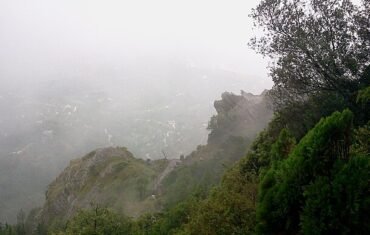

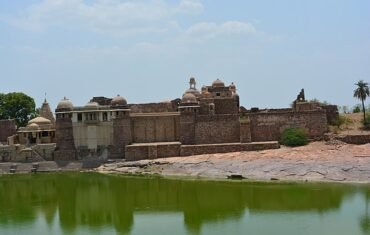

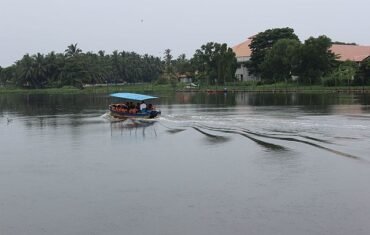
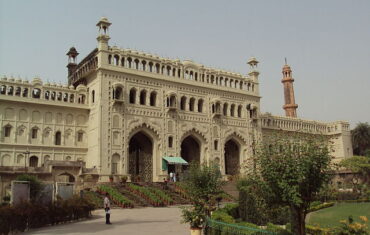
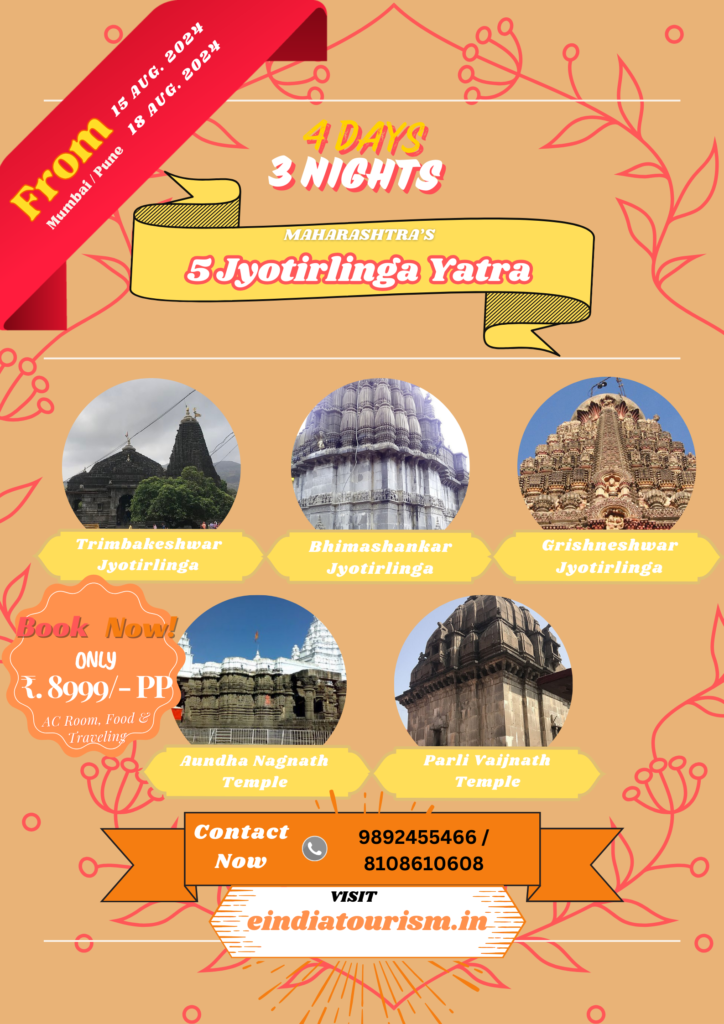

Comments are closed.